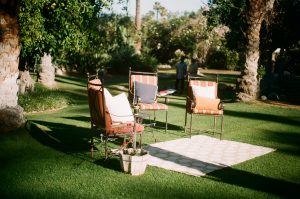You’ve considered and decided on every intricate detail of your newly built home—from the windows and doors down to the number of electrical outlets in each room. Now, you have a whole new blank canvas to tackle: your landscaping. Here are some tips for starting out the process.
Turf Wars: Sod Versus Seed
Let’s start with the basics, especially if the view outside of your new home is, well, basically mud. Whether you choose to sod or seed will depend on multiple factors, including costs, lot size, time of year and your ability to water on a regular basis.
Sod
Sod is simply an upper layer of soil with grass growing in it often harvested into rolls. Nationwide, the average cost for sod ranges from 35¢ to 80¢ per square foot, just for the sod. With professional installation, the cost is from 90¢ to $1.80 for each square foot.
Advantages
- Instant lawn
- Erosion control
- Able to be planted anytime during the growing season (as long as it is watered regularly)
- Helps avoid weed growth
Disadvantages
- More costly
- Less choices in types of grass
- Consistent, substantial watering needed in the beginning
Seed
The average cost of seeding in the U.S. is noticeably less, at 10¢ to 19¢ per square foot with professional installation, amounting to $680 to $1,815 for a typical lawn or as little as $195 if you do the work yourself.
Advantages
- Less expensive
- Wider variety of grass options
Disadvantages
- Longer process
- Greater need for long-term weed maintenance and regular watering
- Shorter window for optimal planting (early fall is the best time of year to avoid weed germination)
Costs of Landscaping
A general rule of thumb is to plan on investing about 10 percent of the cost or your home on landscaping. (For instance, budget $20,000 for landscaping a $200,000 home.) However, that rule of thumb does not mean that you have to spend that entire amount up front! Many homeowners desire to carry out—and budget—their design over time.
Completing your landscaping vision can easily be completed in phases. The Landscaping Network suggests that you can work with a landscape designer to implement a project over a course of time, as long as you hit these major steps first:
- The Design. Think the overall design—what you envision the “finished product” looking like—as a first step. Consider connections for gas, electricity and water and whether you might want a pool or an irrigation system, for instance.
- The Surfaces. Consider your lawn, patios, walkways and any other space that will be covered with concrete, stone, grass, gravel, bark or some other substance.
- The Trees. Plan long range for trees—the shade desired, the expected size, the species and so on. A basic guideline is that any tree should be planted as far away from the foundation of the home as it will grow in height. (A tree that will be 20 feet tall should be planted a minimum of 20 feet away from your house.)
Getting Instant Gratification in New Home Landscaping
Like your planning and building of your home, your landscape is going to take time to develop, complete and flourish. If you’re working with a blank canvas, begin with foundation plantings. Look for varieties that will give you four seasons of interest and are the right size and scale for your home design.
This Old House suggests an assortment of shrubs—both evergreen varieties and those which are summer-flowering—as well as perennials and ornamental grasses.
Enlist a Pro
Even if you are an avid green thumb or DIY-er, a landscape architect or designer can be well worth the money when you’re working with a blank canvas. The going rate nationally ranges from just under $2000 to over $7000.
If you want to do the work yourself in phases, hire a professional to help you with the plans and your timeline. Many landscape professionals will design your layout, give you a list of plants and trees to purchase and consult with you as needed. Others can be enlisted to be your foreman throughout the entire process.
You took every precaution to make sure your new construction home was a good investment. The same planning and precision should be taken into account when it comes to your landscaping. Afterall, landscaping can increase your property value by up to 12.7 percent, according to a Virginia Tech study.
For more DIY landscaping ideas, follow us on Pinterest.
